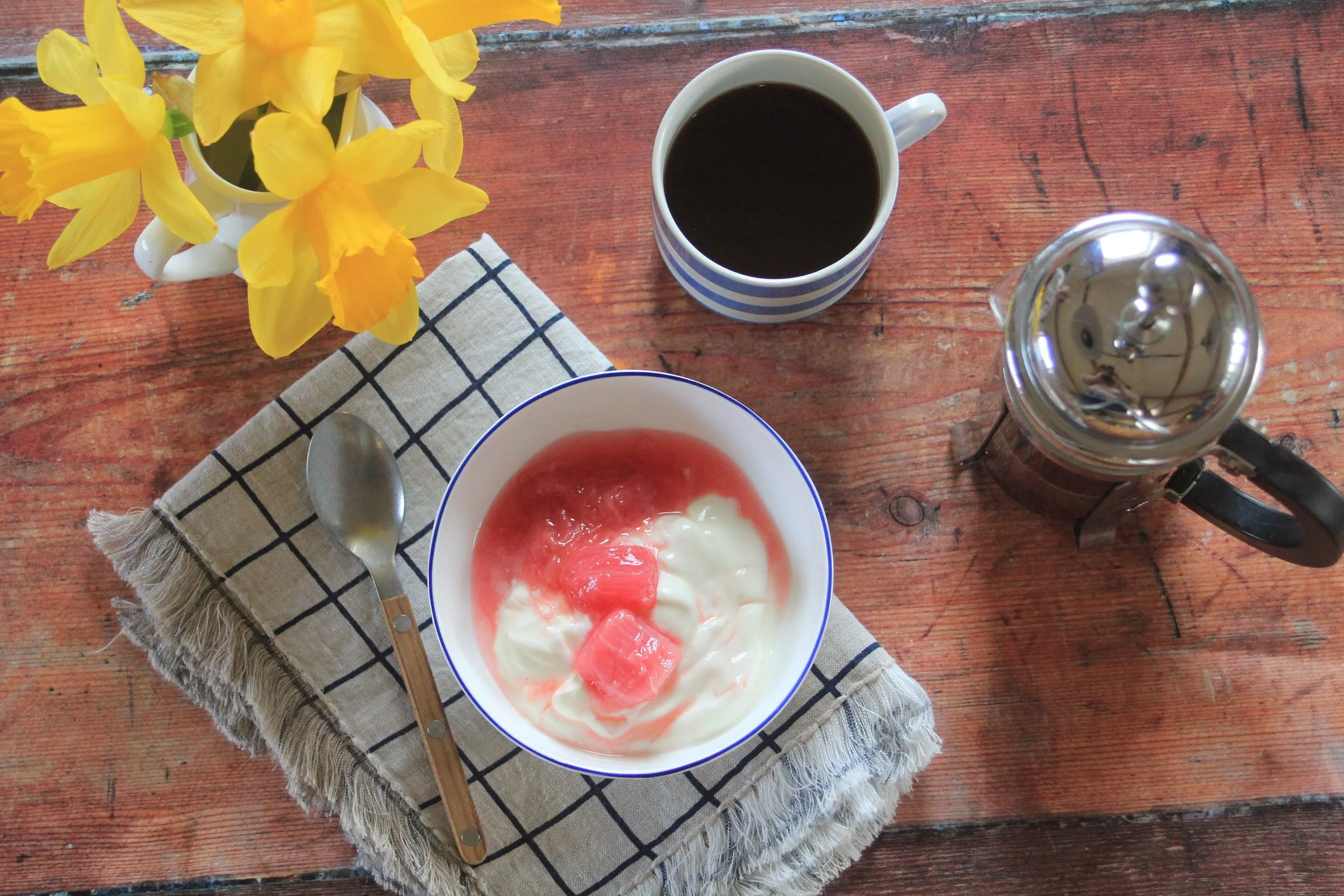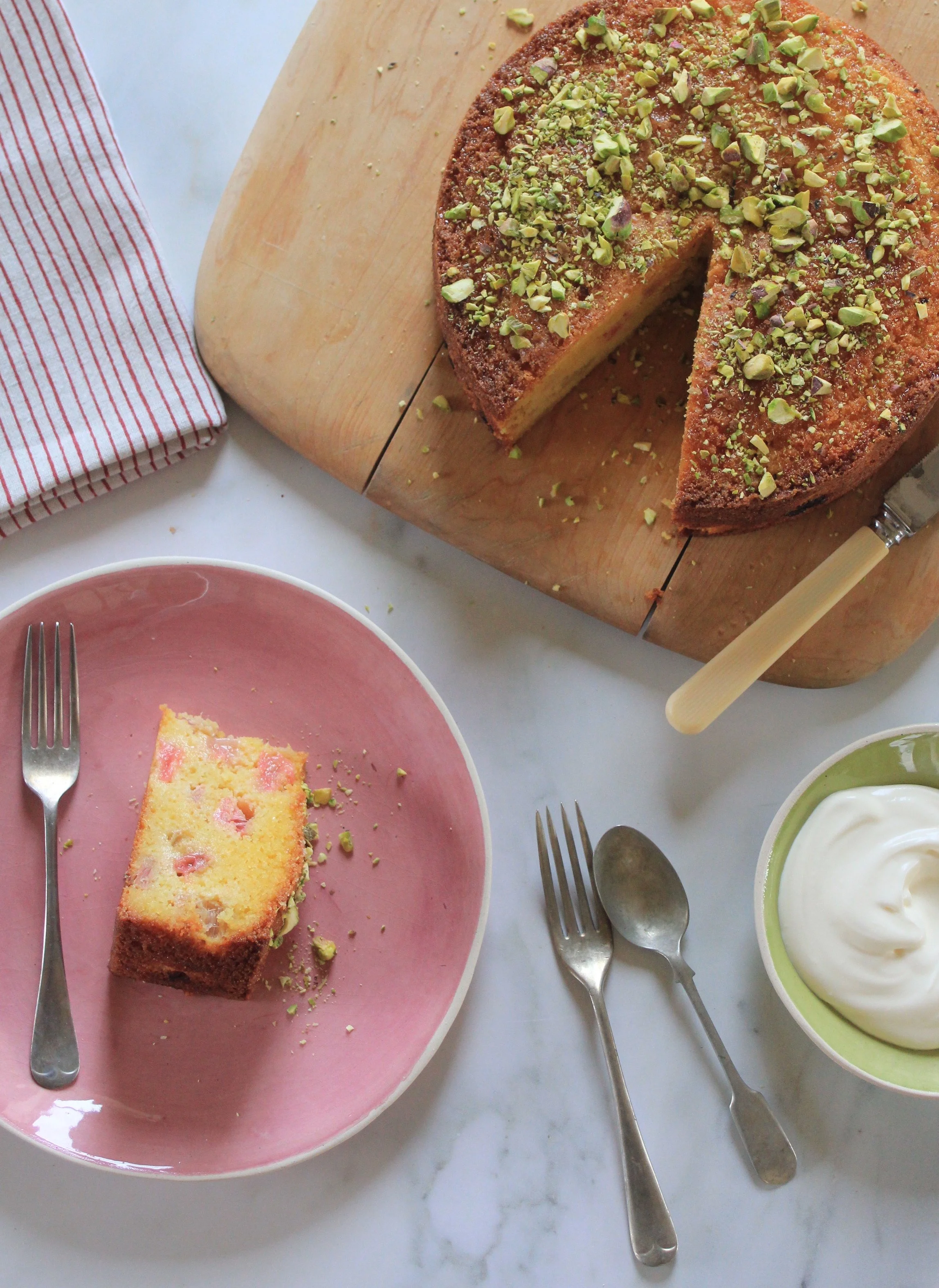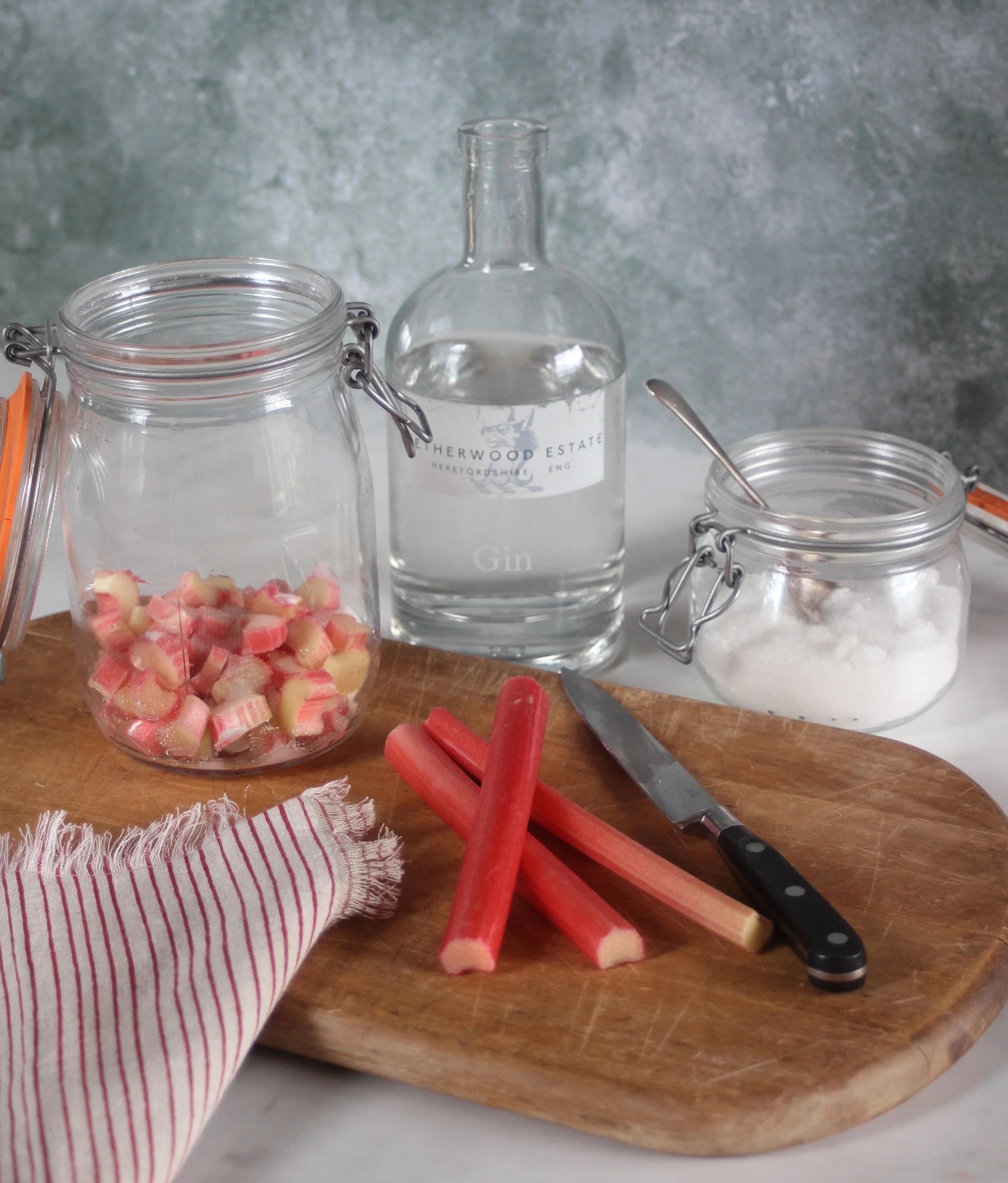MARCH - RHUBARB
Rhubarb is easy to grow, producing masses of colourful stalks every year. The redder the rhubarb stalk, the sweeter the flavour; but be wary of those luscious leaves – they are poisonous to eat, though safe to compost.
Native to China, rhubarb came to the UK via the Silk Road and at the time was more expensive than saffron. It gained popularity as it became more abundant, as medicinal interest grew, and as the price of sugar decreased. Rhubarb is now a common plant for any keen home-grower.
On the Netherwood Estate we typically choose the Early Timperley and Fultons Strawberry varieties of rhubarb.
GROW YOUR OWN
To grow your own, plant crowns (cuttings of parent plants with some root and at least one dormant bud) in fertile, free-draining soil. Plant in Autumn and allow plenty of space around the plant so it can spread out. Add organic matter, such as well-rotted horse manure and water during dry periods. Remove any flower stems when they appear and when it’s time to harvest, take the entire stem, gently twisting and then pulling it upwards from the base.
If it’s your first year of growing rhubarb, hold off harvesting. It’s best to give the roots a full year to get established. To get an early crop of rhubarb, cover the crowns (a bin or bucket will do if you don’t have a rhubarb forcer) in early winter to stop light from reaching the emerging rhubarb stems. The tender plants will have developed tender stems after around five weeks.
RECIPES
FAST FOOD
Rhubarb and cardamom compote
Perfect for a flavourful breakfast or instant pud, compote is an easy and versatile dish to make ahead and enjoy at a moment’s notice.
Serves 6
Takes 20 minutes
V, VG, GF, DF
400g forced rhubarb
100g caster sugar
50ml water or juice of half an orange or blood orange
8 cardamom pods
Trim and slice the rhubarb into 1cm pieces, add to a large saucepan, cover with sugar and water or orange juice. Gently crush the cardamom pods in a pestle and mortar, remove and reserve the pods, then grind the seeds to a fine powder. Add the pods and seeds to the pan, stir and place over a low-medium heat, bring to a simmer then reduce the heat, place on a lid and cook for 10-15 minutes until the rhubarb has cooked through. Remove from the heat and allow to cool. Store in the fridge in an airtight container for up to 2 weeks.
SIMPLE SUPPER
Spiced pork tenderloin with sesame and maple roasted rhubarb
Chinese five spice roasted pork offers a fragrant sweetness against tart rhubarb. Cooking together in one pan makes this a simple and delicious midweek meal.
Serves 4
Takes 35 minutes
DF
600g pork tenderloin
1 tsp Chinese 5 spice
2 tsp rapeseed oil
450g forced rhubarb
2 tbsp maple syrup
3 tsp light soy sauce
2 tsp sesame oil
1 orange
½ thumb sized piece fresh ginger
2 garlic cloves
2 pak choi, optional
For the dressing
2 tbsp light soy sauce
2 tbsp maple syrup
1 tbsp sesame oil
Preheat the oven to 190°c, fan 170c, gas 5. Trim and slice the rhubarb into 2cm pieces. Place in a large roasting dish along with the maple syrup, soy sauce and sesame oil. Peel the ginger and cut into matchsticks, bruise the garlic cloves and add to the rhubarb with the grated zest of the orange. Stir to combine and set aside.
Pat the pork dry with kitchen roll and then roll in the Chinese five spice. Place a large frying pan over a medium heat, add the rapeseed oil and cook to seal the pork for 1-2 minutes, turning occasionally. Add the pork to the rhubarb dish and roast in the oven for 30 minutes.
Remove from the oven and allow to rest for 2-3 minutes. Trim and slice any large leaves of the pak choi in half, stir fry in a large saucepan for 1-2 minutes with a drizzle of oil. Combine the dressing ingredients, slice the pork and serve.
SOMETHING SPECIAL
Rhubarb and lemon polenta cake with crushed pistachios
This zesty, fruity cake is full of flavour and beautiful texture, it partners perfectly with crème fraiche and is gloriously gluten-free.
Serves: 10-12
Takes: 1 hour 20 minutes
V, GF
250g salted butter, softened, plus extra for greasing
335g caster sugar
4 medium eggs
200g fine polenta
100g ground almonds
1 ½ tsp gf baking powder
2 lemons
300g forced rhubarb
85g caster sugar
30g shelled pistachios
Preheat the oven to 190°c, fan 170°c, gas 5. Grease and line a deep 20cm cake tin with baking paper. In a large mixing bowl beat together the flour and 250g of sugar until pale and fluffy, then gradually add the eggs, beating to combine between additions. Fold through the polenta, ground almonds and baking powder, the zest of both lemons and juice of half a lemon. Trim and cut the rhubarb into 1cm pieces and fold into the cake mixture.
Add the mixture to the lined cake tin and place in the oven for 1 hour, or until a skewer inserted into the cake comes out clean. Check the cake after 50 minutes and loosely cover with foil if starting to turn too golden.
Remove from the oven and set aside to cool in the tin. Meanwhile make a lemon syrup by combining the juice from the remaining lemons with the remaining caster sugar in a small pan. Bring to the boil over a medium heat, stirring occasionally. Reduce the heat and simmer for 1-2 mins then remove from the heat. Prick the cake all over with a skewer and pour over the syrup. Allow the cake to cool completely, roughly chop the pistachios and sprinkle over the cake.
PRESERVE
Rhubarb Gin
Home-made fruit flavoured spirits are ridiculously easy to make and – to our taste – are much nicer than many overly sweet, shop-brought ones.
For this rhubarb gin, the colour of the rhubarb makes no difference to the taste but will affect the final colour of your gin: if you are after a delicate pale pink, then use the early forced rhubarb, rather than late greener varieties.
Serves: 40 (25ml measures)
Takes: 3 - 4 weeks
V, VG, DF
1kg rhubarb (leaves removed as they are poisonous)
500g granulated or caster sugar
1 litre gin (we use an everyday London dry gin – there is no point is using a very high end one with complex botanicals as you are wanting the rhubarb flavour to come through)
Sterilise a large kilner jar (big enough to hold all the gin and rhubarb) by heating in the oven. Cut the rhubarb into pieces and add to the kilner jar with the sugar. Give it a good shake and leave to macerate overnight, which allows the pink juice to mix into the sugar. Add the gin. Seal and shake firmly to mix. Store in a cool dark larder or cupboard, remembering to shake it from time-to-time to ensure all the sugar has dissolved. It will be ready after 3-4 weeks. Before bottling, check for sweetness and either add sugar or gin, to taste. Strain through a sieve lined with a muslin to remove any pieces of rhubarb. Decant into sterilised bottles.
Serve with tonic over ice or use as the base for a delicious cocktail such as a rhubarb martini. Savour this as a seasonal summer drink and use within a few months as over time the gin will discolour.






